music theory g5 test prep
1/177
There's no tags or description
Looks like no tags are added yet.
Name | Mastery | Learn | Test | Matching | Spaced |
|---|
No study sessions yet.
178 Terms
semibrevre
whole note

minim
half note (half of whole, ½)

crotchet
quarter note (quarter of crotchet, 1/4)

quaver
8th note (1/8)
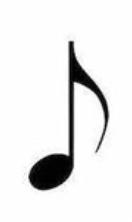
semiquaver
16th note 1/16

parts of a note
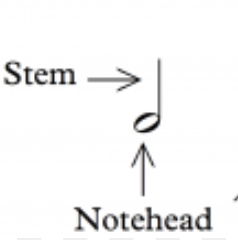
pairs of quavers/ halfnotes are joined together with a..
beam
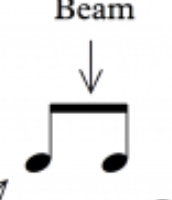
quavers joined together with a beam = how mnay count?
1 count
the top number in a time signature shows the
number of beats within a bar

common time = what time signature
4/4 or C
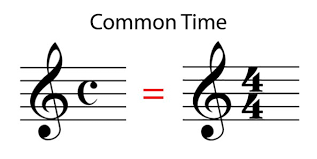
bottom number in time signature shows..
time value of the beat
maximum number of beats in a bar
which beats CANT you beam together in 4/4
2 and 3
how to read bass clef note
change to treble clef
ask - what note that would be in treble clef
up 2 tones
bass clef note
notes in the spaces of the bass clef can be remember utilising the acronym..
all
cows
eat
grass
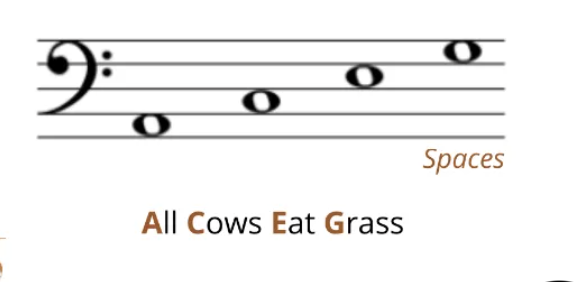
notes on the lines of the bass clef can be remember utilising the acronym..
grizzly
bears
dont
fly
airplanes
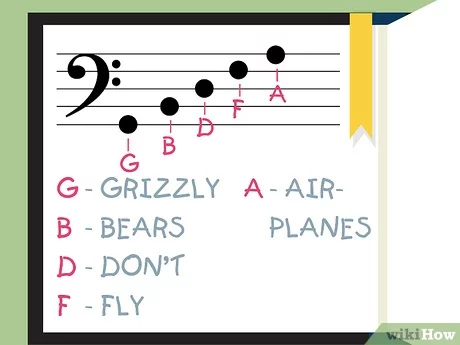
when a note is ABOVE the middle line, how do you draw the stem
downwards on the left hand side
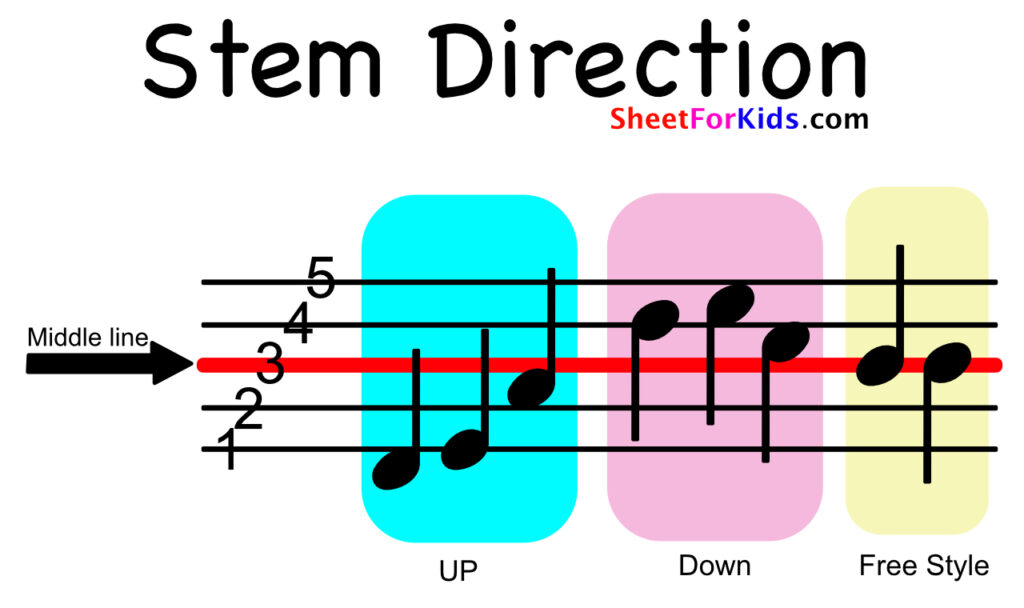
when a note is BELOW the middle line, how do you draw the stem
right hand side up
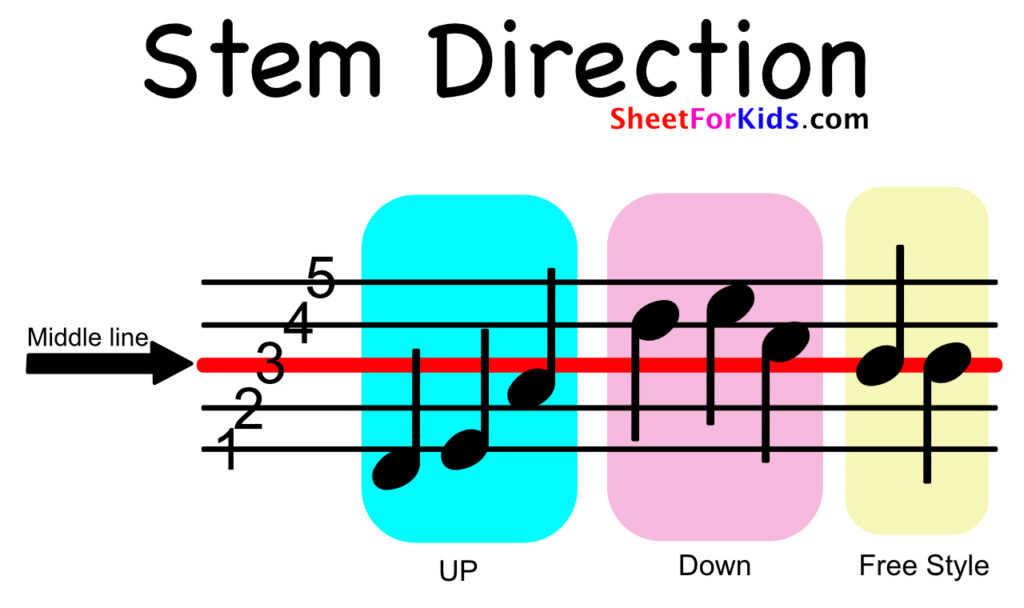
notes on the middle line have stems taht can go in..
either direction
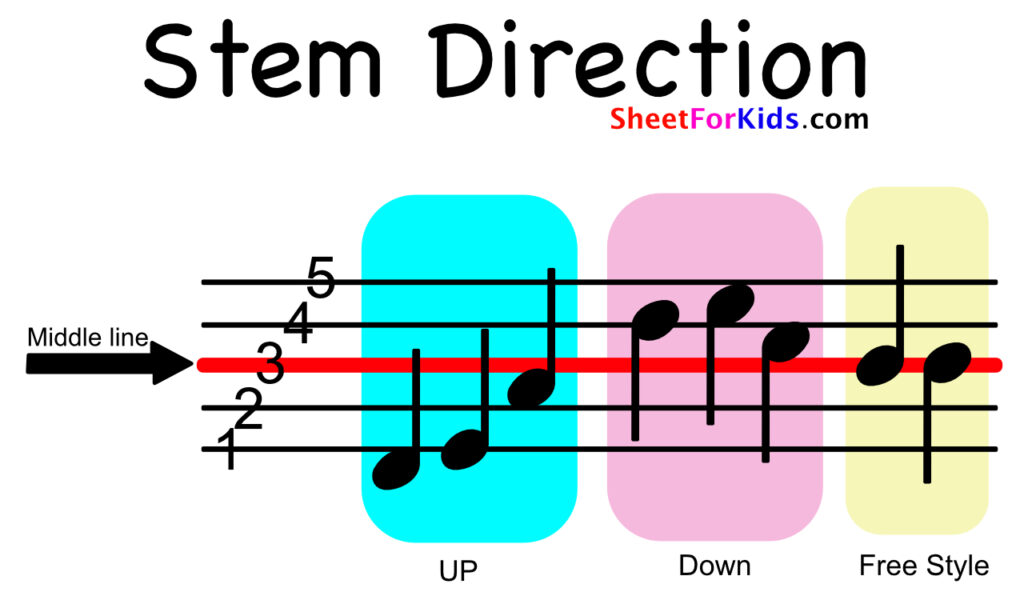
how many beats is a dotted crotchet worth in quavers
3 beats
when doubling the time values.. the beats get ___ and the bottom number of the time signature gets ___
beats = longer
number = smaller
when halving the time values. the beats get ___ while the bottom number of the time signature gets ___
beats = shorter
number = larger
what time signature uses quaver beats
3/8

semibreve rest or whole bar rest

minim rest
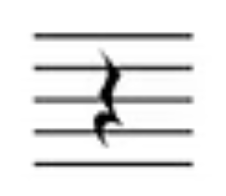
crochet rest

quaver rest
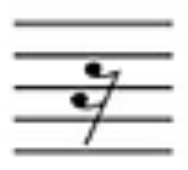
semi quaver rest
how do you read a triplet note
hide the last note
combine first two
play for combine length
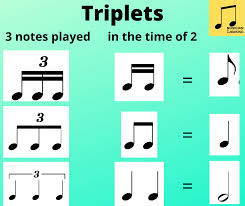
value of the dot after a rest
half of the rest w/o dot
eg dotted minim becomes minim + crotchet
how to group semi quavers and quavers using beams?
look at bottom number of time signature - 4= crochet, 2= minim..
based on said note, group the quavers and semi quavers in sets of that until they make up the vlaue of tje bottom time signature
eg
2/4 time signature = all semi quavers and quavers will be grouped in crotchets
what not to do when beaming quavers and semi quavers in 4/4
dont beam notes on beats 2 and 3, keep said notes seperate/ in pairs
when to use a tie
two notes of different values with the
what rest should you use when the hwole bar is silent
semibreve rest
when to use a joint/single rest
when first half or second half of a bar in 2/2 or 4/4 is silent
eg
crochet rests join together and become a minim rest
c major scale key signature
no sharp no flat
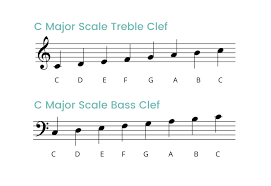
key siganture
indictaes the number and which shaprs or flats are included in the piece
define degrees (scale)
notes within said scale
tonic or key note within a scale
starting and end notes of a scale (same note diff pitch - most important)
pattern of tone and semitones for all major scales
TTSTTTS
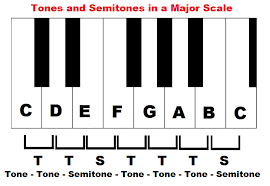
which degrees are semitones in a major scale
3, 4
7, 8
g major key signature
f#
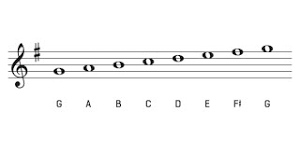
in a g major scale, which degrees and notes are semi tones
3 and 4 - B and C
7 and 8 - F# and G
D major scale key siganture
F and C sharp
how many accidentals in c major scale
none
accidentals in g major
f sharp
accidentals in D major
f and c sharp
in a d major scale, which degrees and notes are semi tones
3 and 4 - f sharp and g
7 and 8 - c sharp and d
f major key signature
b flat
accidnetals in f major
one - b flat
in a f major scale, which degrees and notes are semi tones
3 and 4 - a and b flat
7 and 8 - e and f
total number of ntes / degrees in a scale
8
how to find key of a piece
identify al accidentals
match accidentals with their corresponding key siganture
e flat majro accientals
b, e, a flat
order of accidentals in e flat major
b, e, a flat
b flat major all accidentals
B♭, E♭
b flat major order of accidentals
Order to write accidentals:
B♭ → E♭
a maj. accidentals
Accidentals in the scale:
F♯, C♯, G♯
a maj. accidental order
Order to write accidentals:
F♯ → C♯ → G♯
d maj. accidental order
f then c sharp
d maj accidental number + which accidnental
2
f and c shapr
a maj accidental number + which accidnental
3
FCG sharp
e flat maj total accidental number + whcih accidnetals
3
B E A sharp
b flat maj accidental number + which accidnental
2
b and e flat
order of accidentals in general for flats
zigzag
starting flat - up - down
order of accidentals in general for sharps
starting sharp - down - up
E-flat Major semitones
3rd and 4th degrees:
3rd: G
4th: A♭
Semitone: G → A♭
7th and 8th degrees:
7th: D
8th (Octave): E♭
Semitone: D → E♭
B-flat Major semitones
3rd and 4th degrees:
3rd: D
4th: E♭
Semitone: D → E♭
7th and 8th degrees:
7th: A
8th (Octave): B♭
Semitone: A → B♭
A Major semi tones
3rd and 4th degrees:
3rd: C♯
4th: D
Semitone: C♯ → D
7th and 8th degrees:
7th: G♯
8th (Octave): A
Semitone: G♯ → A
for every major key there is a ___ ___ key
relative minor
a minor relative major
c major
g major relative minor
e minor
f sharp
d minor relative major
f major
b flat
which degree in a harmonic minro scale is always raised by a semi
7th degree
whihc degrees in a harmonc minor are semi tones
2, 3
5,6
7,8
accidentals in e harmonic minor
1
f sharp
d harmonic minor accidentals
1
b flat
in an e harmonic minor scale, which degrees and notes are semitones
Semitone intervals (half steps) occur between:
2nd and ♭3rd degrees: F♯ → G
5th and ♭6th degrees: B → C
7th and 8th (octave) degrees: D♯ → E
in an d harmonic minor scale, which degrees and notes are semitones
Semitone intervals (half steps) occur between:
2nd and ♭3rd degrees: E → F
5th and ♭6th degrees: A → B♭
7th and 8th (octave) degrees: C♯ → D
melodic minor scale pattern ascending
raised 6th and 7th note by a semitone - along with original key
melodic minor scale pattern descending
lowered 7th and 6th note by a semitone - along with original key
when a harmonic minor scale is descending, is the raised 7th kept at raised pitch or lowered by a semitone
kept at raised pitch (by a semitome)
Q1: What interval separates each key on the Circle of Fifths?
A1: A perfect fifth separates each key clockwise on the Circle of Fifths.
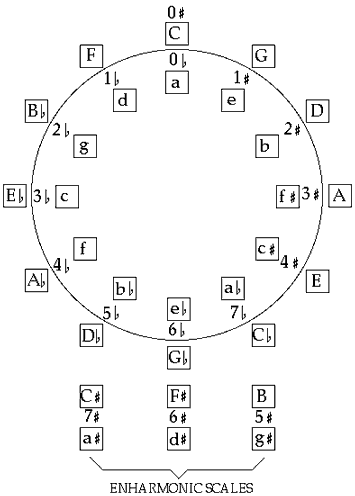
Q2: How many sharps does the key of A major have, and which are they?
A2: A major has 3 sharps: F♯, C♯, and G♯.
where are minors written in the circle of 5ths
inner
where are majors written in the circle of 5ths
outter
which direction and side are sharps written in the circle of fiths
right
which direction and side are flats written in the circle of fiths
left
Q5: How do the number of sharps change when moving clockwise around the Circle of Fifths?
A5: Each step clockwise adds one sharp.
Q5: How do the number of flats change when moving counterclockwise around the Circle of Fifths?
adds one flat
in teh circle of fifths, relative minors can be recognised as..
the minor scales within the inner circle, beside the major key
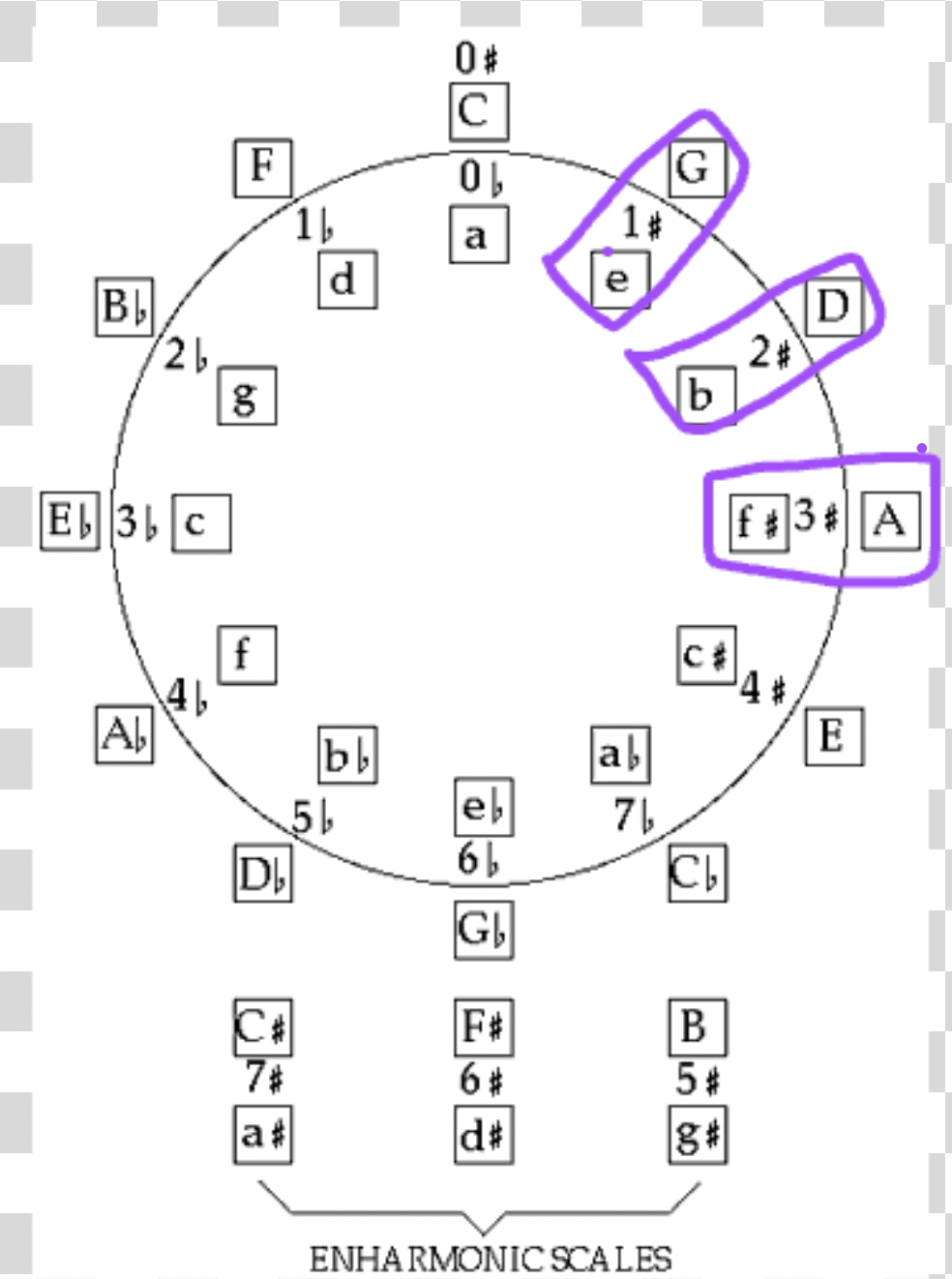
all major scales with sharps - clockwise around circle of fifths - limited to four
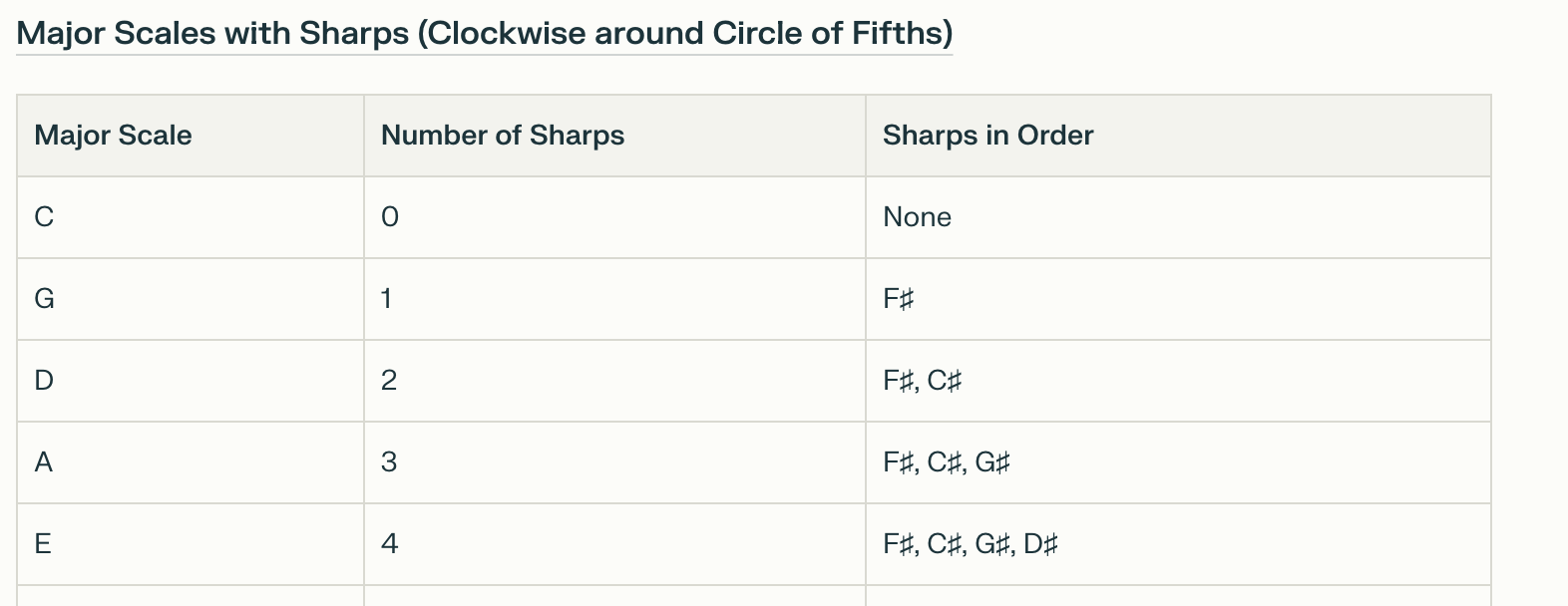
all major scales with flats - counterclockwise around circle of fifths - limited to four

sharps in circle of fifths - limited to 4
F, C, G, D
IN THAT ORDER
flats in circle of fifths - limited to 4
BEAD
IN ORDER
acronym to remmeber flats in circle fo fifths - limited to four
BEAD
What does the mnemonic "Fat Boy Eat All Day" help me remember in music theory
The mnemonic "Fat Boy Eat All Day" helps you remember the order of flats in key signatures in music theory.
Specifically, it corresponds to the sequence of flats added as you move counterclockwise around the Circle of Fifths:
F (Fat)
B♭ (Boy)
E♭ (Eat)
A♭ (All)
D♭ (Day)
This phrase is a memory aid to recall which flats appear and in what order in flat key signatures. The full order of flats, continuing beyond this mnemonic, is:
B♭ → E♭ → A♭ → D♭ → G♭ → C♭ → F♭
What does the mnemonic "Father Charles Goes Down And Ends Battle" help me remember in music theory
The mnemonic "Father Charles Goes Down And Ends Battle" (or variations like "Father Charles Goes Down And Burns Eggs") is commonly used to help remember the order of sharps in key signatures in music theory.
The sequence it represents is:
F♯ → C♯ → G♯ → D♯ → A♯ → E♯ → B♯
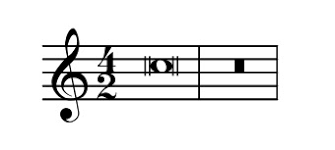
breve note = how many beats
8
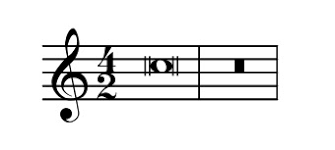
breve rest = how many beats
8
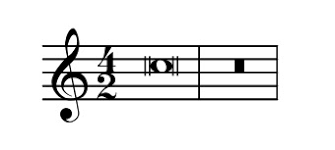
a breve equals to __ crochets
8